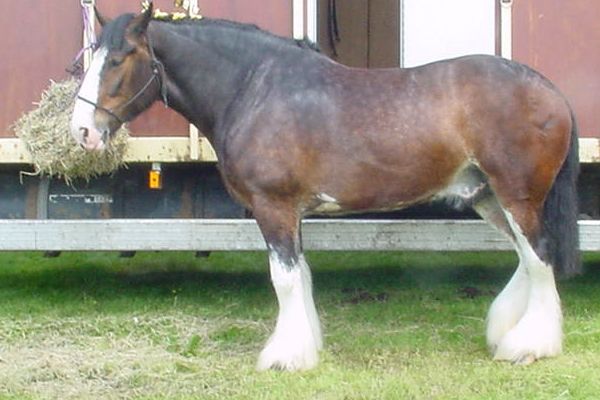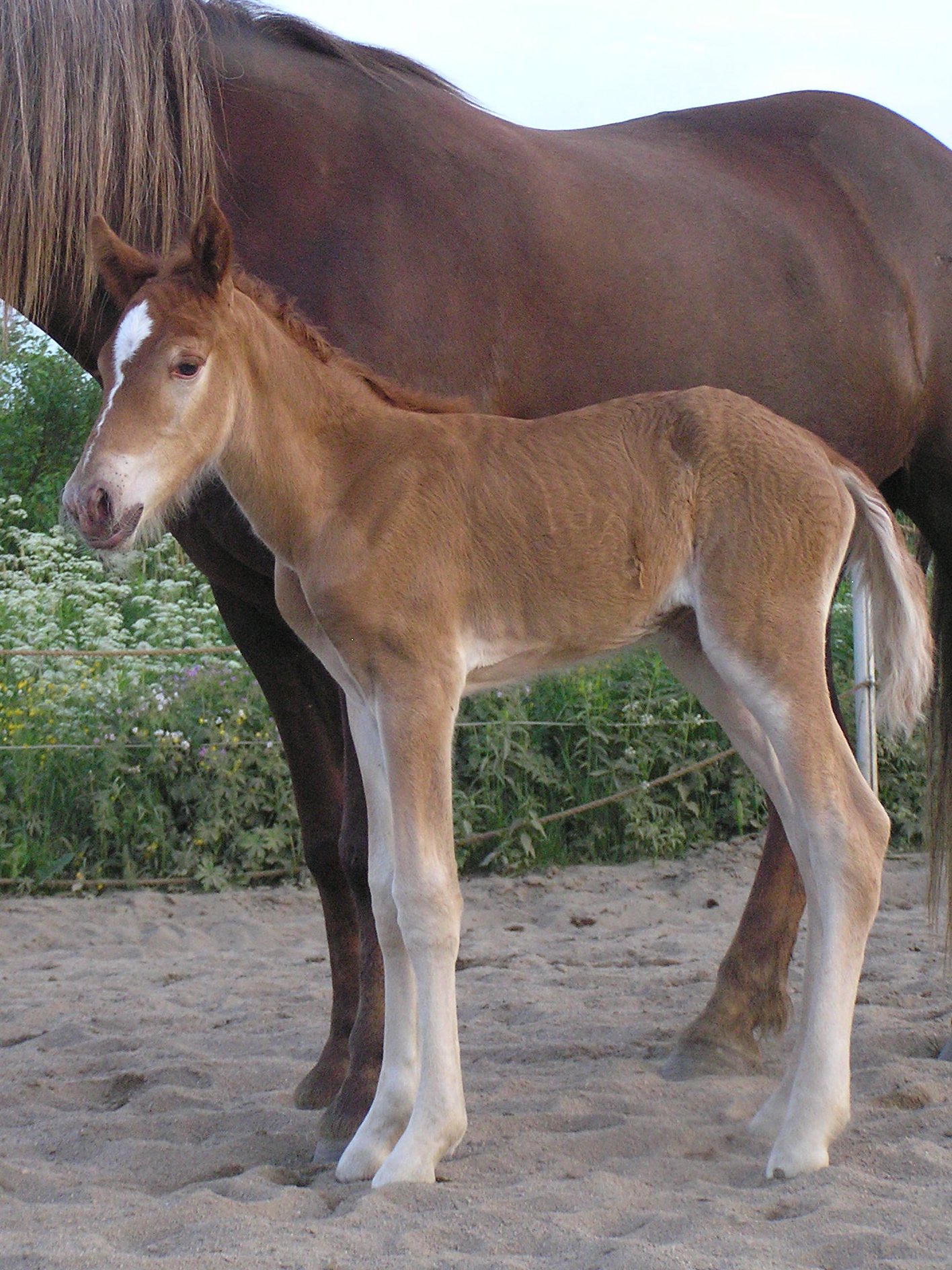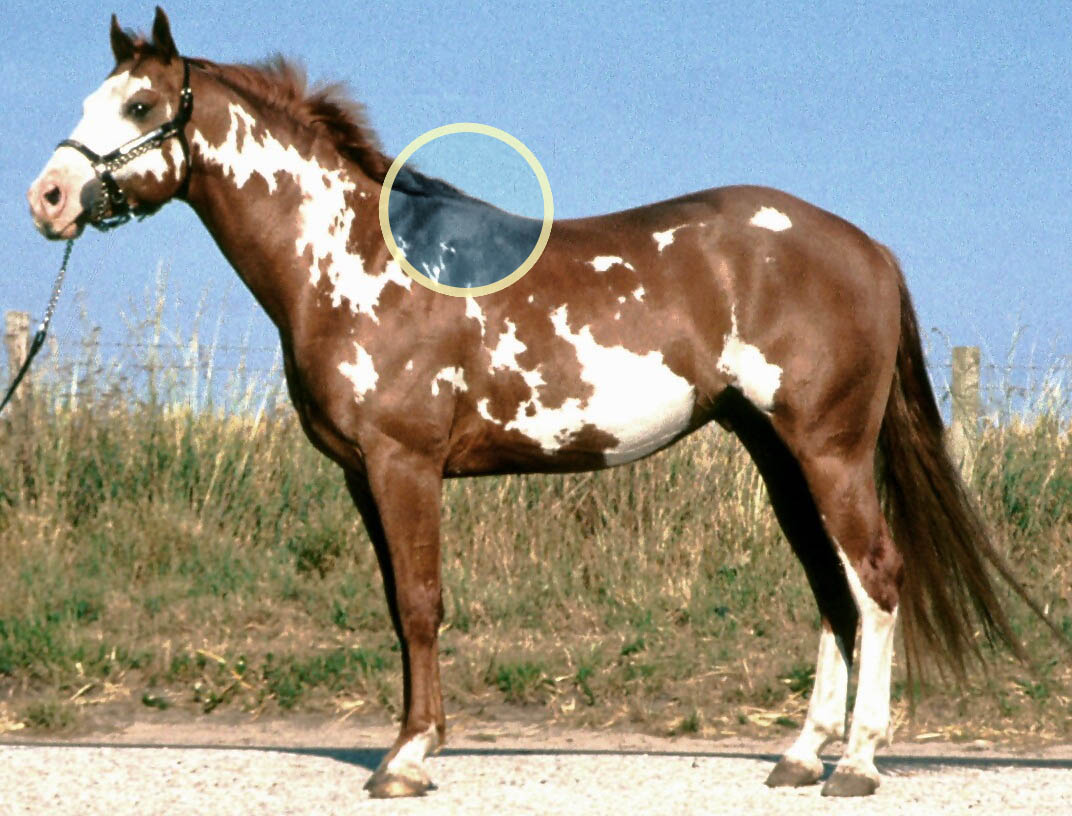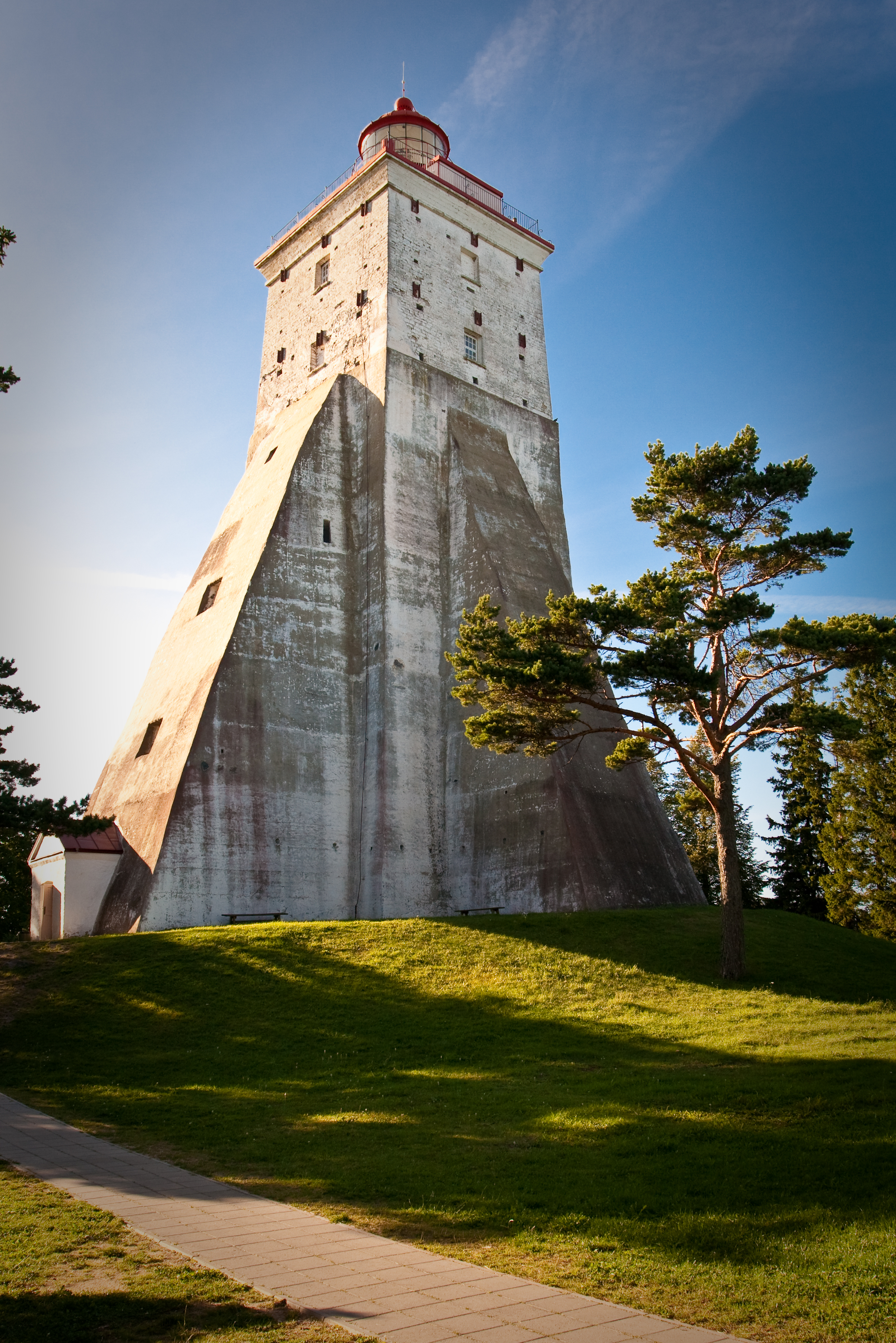|
Estonian Native
The Estonian Native, ( et, Eesti hobune, or Klepper), is an Estonian breed of small horse. It is strong and is resistant to disease. It is one of three recognised horse breeds in Estonia, the others being the Tori and the Estonian Draught, both of which derive from it. It has also influenced other Northern European breeds such as the Latvian Warmblood, and the Vyatka and the extinct Obva in Russia. It is an endangered breed; the population fell from about 16000 in the 1950s to approximately 500 in 2004. History During the eleventh century, the chronicler Adam of Bremen considered the Estonians to be rich in gold and good horses. Estonian horses were exported to Russia through Novgorod in the fourteenth and fifteenth centuries. The first documented attempts to improve the Estonian Native date from after the foundation in 1856 of the Tori stud farm in Tori, in Pärnu County in south-western Estonia, where the original native was selectively bred. It was also cross-bred with ... [...More Info...] [...Related Items...] OR: [Wikipedia] [Google] [Baidu] |
DAD-IS
DAD-IS is the acronym of the worldwide Domestic Animal Diversity Information System of the Food and Agriculture Organization of the United Nations, within the FAO's management of animal genetic resources programme.Domestic Animal Diversity Information System (DADIS)- About. Food and Agriculture Organization of the United Nations. It includes a searchable database of information about breeds, the Global Databank for Animal Genetic Resources; it also holds tools for management, and contacts for the National and Regional Coordinators for the programme. Data frothe Global Databankis used for reporting on the global status and trends of animal genetic resources. The fourth version of the DAD-IS was launched on 21 November 2017. Breeds in the Global Databank There were 11,116 mammalian national breed populations in DAD-IS as of February 2016, and 3,799 avian national breed populations.2016. FAO. Status of Animal Genetic Resources. http://www.fao.org/documents/card/en/c/c40d538b-476 ... [...More Info...] [...Related Items...] OR: [Wikipedia] [Google] [Baidu] |
Draught Horse
A draft horse (US), draught horse (UK) or dray horse (from the Old English ''dragan'' meaning "to draw or haul"; compare Dutch ''dragen'' and German ''tragen'' meaning "to carry" and Danish ''drage'' meaning "to draw" or "to fare"), less often called a carthorse, work horse or heavy horse, is a large horse bred to be a working animal doing hard tasks such as plowing and other farm labor. There are a number of breeds, with varying characteristics, but all share common traits of strength, patience, and a docile temperament which made them indispensable to generations of pre-industrial farmers. Draft horses and draft crossbreds are versatile breeds used today for a multitude of purposes, including farming, draft horse showing, logging, recreation, and other uses. They are also commonly used for crossbreeding, especially to light riding breeds such as the Thoroughbred, for the purpose of creating sport horses of warmblood type. While most draft horses are used for driving, they c ... [...More Info...] [...Related Items...] OR: [Wikipedia] [Google] [Baidu] |
Easy Keeper
Easy may refer to: Arts and entertainment Film and television * ''Easy'' (film), a 2003 American romantic comedy film *''Easy!'', or ''Scialla!'', a 2011 Italian comedy film * ''Easy'' (TV series), a 2016–2019 American comedy-drama anthology series Music Albums * ''Easy'' (Easybeats album), 1965 * ''Easy'' (Grant Green album), 1978 * ''Easy'' (Grinspoon album), 1999 * ''Easy'' (Kelly Willis album) or the title song, 2002 * ''Easy'' (Marvin Gaye and Tammi Terrell album), 1969 * ''Easy'' (Nancy Wilson album), 1968 * ''Easy'' (Ralph McTell album), 1974 *''Easy'', by Cowboy Mouth, 2000 Songs * "Easy" (Commodores song), 1977; covered by Faith No More, 1992 * "Easy" (Camila Cabello song), 2019 * "Easy" (Cro song), 2012 * "Easy" (DaniLeigh song), 2019 * "Easy" (Dragonette song), 2010 * "Easy" (Ice MC song), 1989 * "Easy" (Mat Zo and Porter Robinson song), 2013 * "Easy" (Pale Waves song), 2021 * "Easy" (Paula DeAnda song), 2007 * "Easy" (Rascal Flatts song), featuring Natasha Bedingf ... [...More Info...] [...Related Items...] OR: [Wikipedia] [Google] [Baidu] |
Gray (horse)
A gray horse (or grey horse) has a coat color characterized by progressive depigmentation of the colored hairs of the coat. Most gray horses have black skin and dark eyes; unlike some equine dilution genes and some other genes that lead to depigmentation, gray does not affect skin or eye color. Gray horses may be born any base color, depending on other color genes present. White hairs begin to appear at or shortly after birth and become progressively more prevalent as the horse ages as white hairs become intermingled with hairs of other colors. Graying can occur at different rates—very quickly on one horse and very slowly on another. As adults, most gray horses eventually become completely white, though some retain intermixed light and dark hairs. The stages of graying vary widely. Some horses develop a dappled pattern for a period of time, others resemble a roan with more uniform intermixing of light and dark hairs. As they age, some gray horses, particularly those hetero ... [...More Info...] [...Related Items...] OR: [Wikipedia] [Google] [Baidu] |
Chestnut (coat)
Chestnut is a hair coat color of horses consisting of a reddish-to-brown coat with a mane and tail the same or lighter in color than the coat. Chestnut is characterized by the absolute absence of true black hairs. It is one of the most common horse coat colors, seen in almost every breed of horse. Chestnut is a very common coat color but the wide range of shades can cause confusion. The lightest chestnuts may be mistaken for palominos, while the darkest shades can be so dark they appear black. Chestnuts have dark brown eyes and black skin, and typically are some shade of red or reddish brown. The mane, tail, and legs may be lighter or darker than the body coat, but unlike the bay they are never truly black. Like any other color of horse, chestnuts may have pink skin with white hair where there are white markings, and if such white markings include one or both eyes, the eyes may be blue. Chestnut foals may be born with pinkish skin, which darkens shortly afterwards. Chestnu ... [...More Info...] [...Related Items...] OR: [Wikipedia] [Google] [Baidu] |
Bay (horse)
Bay is a hair coat color of horses, characterized by a reddish-brown or brown body color with a black point coloration on the mane, tail, ear edges, and lower legs. Bay is one of the most common coat colors in many horse breeds. The black areas of a bay horse's hair coat are called "black points", and without them, a horse is not a bay horse. Black points may sometimes be covered by white markings; however such markings do not alter a horse's classification as "bay". Bay horses have dark skin – except under white markings, where the skin is pink. Genetically, bay occurs when a horse carries both the Agouti gene and a black base coat. While the basic genetics that create bay coloring are fairly simple, the genes themselves and the mechanisms that cause shade variations within the bay family are quite complex and, at times, disputed. The genetics of dark shades of bay are still under study. The genetic mechanism that produces seal brown has yet to be isolated. Sooty genet ... [...More Info...] [...Related Items...] OR: [Wikipedia] [Google] [Baidu] |
Black (horse)
Black is a hair coat color of horses in which the entire hair coat is black. Black is a relatively uncommon coat color, and it is not uncommon to mistake dark chestnuts or bays for black. True black horses have dark brown eyes, black skin, and wholly black hair coats without any areas of permanently reddish or brownish hair. They may have pink skin beneath any white markings under the areas of white hair, and if such white markings include one or both eyes, the eyes may be blue. Many black horses "sun bleach" with exposure to the elements and sweat, and therefore their coats may lose some of their rich black character and may even resemble bay or seal brown, though examination of the color of hair around the eyes, muzzle and genitals often will determine color. Black horses that do not sun bleach are called "non-fading" blacks. Some breeds of horses, such as the Friesian horse, Murgese and Ariegeois (or Merens), are almost exclusively black. Black is also common in the Fe ... [...More Info...] [...Related Items...] OR: [Wikipedia] [Google] [Baidu] |
Withers
The withers is the ridge between the shoulder blades of an animal, typically a quadruped. In many species, it is the tallest point of the body. In horses and dogs, it is the standard place to measure the animal's height. In contrast, cattle are often measured to the top of the hips. The term (pronounced ) derives from Old English ''wither'' (“against”), because it is the part of a draft animal that pushes against a load. Horses The withers in horses are formed by the dorsal spinal processes of roughly the 3rd through 11th thoracic vertebrae, which are unusually long in this area. Most horses have 18 thoracic vertebrae. The processes at the withers can be more than long. Since they do not move relative to the ground as the horse's head does, the withers are used as the measuring point for the height of a horse. Horses are sometimes measured in hands – one hand is . Horse heights are extremely variable, from small pony breeds to large draft breeds. The height at the ... [...More Info...] [...Related Items...] OR: [Wikipedia] [Google] [Baidu] |
Estonian Bush Pony
Estonian may refer to: * Something of, from, or related to Estonia, a country in the Baltic region in northern Europe * Estonians, people from Estonia, or of Estonian descent * Estonian language * Estonian cuisine * Estonian culture See also * * Estonia (other) * Languages of Estonia * List of Estonians This is a list of notable Estonians. Architects * Andres Alver (born 1953) *Dmitri Bruns (1929–2020) * Karl Burman (1882–1965) * Eugen Habermann (1884–1944) *Georg Hellat (1870–1943) *Otto Pius Hippius (1826–1883) * Erich Jacoby (1885� ... {{Disambiguation Language and nationality disambiguation pages ... [...More Info...] [...Related Items...] OR: [Wikipedia] [Google] [Baidu] |
Gotland Pony
The Gotland Russ or Gotland Pony is an old Swedish breed of pony or small horse. Until the twentieth century it was found only on the small island of Gotland on the south-eastern coast of Sweden. It is now distributed through much of Sweden and is also present in some other European countries and in the United States. The Öland horse from the neighbouring island of Öland was a close relative of the Gotland, but became extinct in the early twentieth century. History The name ''russ'' comes from a now obsolete word ''ross'', which means a riding horse or a charger and it is linked etymologically to the English word ''horse'' (in Old High German this word appeared as ''hros'', and in English a metathesis has switched the places of the /r/ and the /o/, whereas in Swedish /hr/ became /r/, producing ''ross'' or ''russ''.Webster's Seventh New Collegiate Dictionary, 1973. The presence of feral horses on the Baltic island of Gotland is documented from the thirteenth century. From t ... [...More Info...] [...Related Items...] OR: [Wikipedia] [Google] [Baidu] |
Finnhorse
The Finnhorse or Finnish Horse ( fi, suomenhevonen, literally "horse of Finland"; nickname: ''suokki'', or sv, finskt kallblod, literally "finnish cold-blood") is a horse breed with both riding horse and draught horse influences and characteristics, and is the only breed developed fully in Finland. In English it is sometimes called the Finnish Universal, as the Finns consider the breed capable of fulfilling all of Finland's horse needs, including agricultural and forestry work, harness racing, and riding. In 2007, the breed was declared the official national horse breed of Finland. The Finnhorse is claimed to be among the fastest and most versatile "coldblood" breeds in the world. In Finland, the term "universal horse" is used to describe the Finnhorse and breeds such as the Fjord horse that are relatively small with a body type that is heavy for a riding horse but light for a draught. There are four separate sections within the Finnhorse stud book, each with different goals: ... [...More Info...] [...Related Items...] OR: [Wikipedia] [Google] [Baidu] |
Hiiumaa
Hiiumaa (, ) is the second largest island in Estonia and is part of the West Estonian archipelago, in the Baltic Sea. It has an area of 989 km2 and is 22 km from the Estonian mainland. Its largest town is Kärdla. It is located within Hiiu County. Names Hiiumaa is the main island of Hiiu County, called or in Estonian. The Swedish and German name of the island is or ('Day' island) and in Danish. In modern Finnish, it is called , literally 'Hiisi's Land'. In Russian it is known as (). In Old Gutnish, it was ('day isthmus'), from which the local North Germanic name is derived. History Prehistory Hiiumaa emerged from the Baltic Sea 8500 years ago due to isostatic uplift after the retreat of the ice cap. Mesolithic settlements are found on the island's Kõpu Peninsula from about 5500 BC. These settlements seem to be related mostly to seal hunting and extend into the earliest Neolithic. As Hiiumaa is constantly uplifting the local sea level was 20 m higher ... [...More Info...] [...Related Items...] OR: [Wikipedia] [Google] [Baidu] |

.jpg)






